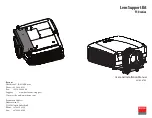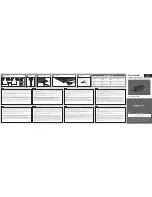
Page 12
Don´t forget to remove the cords used to help
pack the rescue system!!
The cord should be pulled out slowly
in order not to damage the elastic loops by excessive friction.
Compatibility check
A control of every new combination of rescue system and harness/outer container
has to be carried out by either the producer of the harness or the rescue system or
an authorized person (dealer or flight instructor).
The activation of the rescue system in flight position has to be correct and in
conformity to the construction guidelines.
The check has to be recorded in the documentation of the rescue system.
The throwing movement should be practiced every time the rescue system
is repacked.
IMPORTANT POINTS TO LOOK OUT FOR:
Check (steady)
•
connection of the rescue system to your harness
•
connection of the harness and deployment handle
line from the fixing loops is removed (after each packing)
Check compatibility of rescue system and harness
Before each start with your glider you have to check the container
is
closed!!!
Reserve parachute deployment
It is vital to feel periodically for the position of the reserve parachute deployment
handle during normal flight, so that the action of reaching for the reserve
parachute handle becomes instinctive in an emergency. In emergency situations,
the deployment procedure is as follows:
•
Look for the reserve parachute handle and grasp it firmly with one hand.
•
Pull the handle outwards in order to extract the reserve parachute from the
harness container.
•
Look for a clear area, and, in a continuous motion, throw the reserve parachute
away from yourself and the paraglider.
•
After the reserve parachute has opened, avoid entanglement by pulling in the
paraglider, gripping at least one back strap of the risers or the brake lines, in
order to collapse the glider. On landing, adopt an upright body position, and
ensure that you perform a PLF (Parachute Landing Fall) to minimize the risk of
injury.
Содержание Apus
Страница 1: ...Page 1...



































